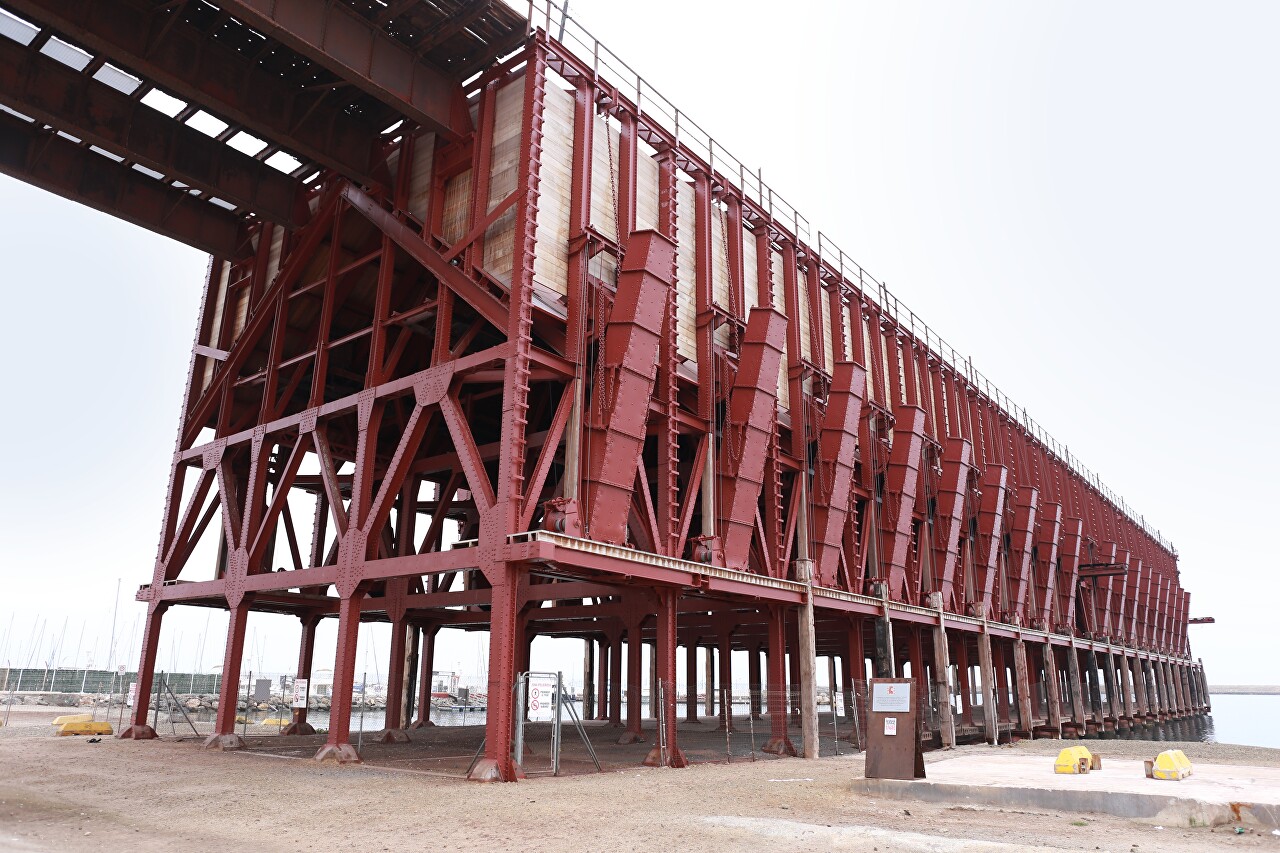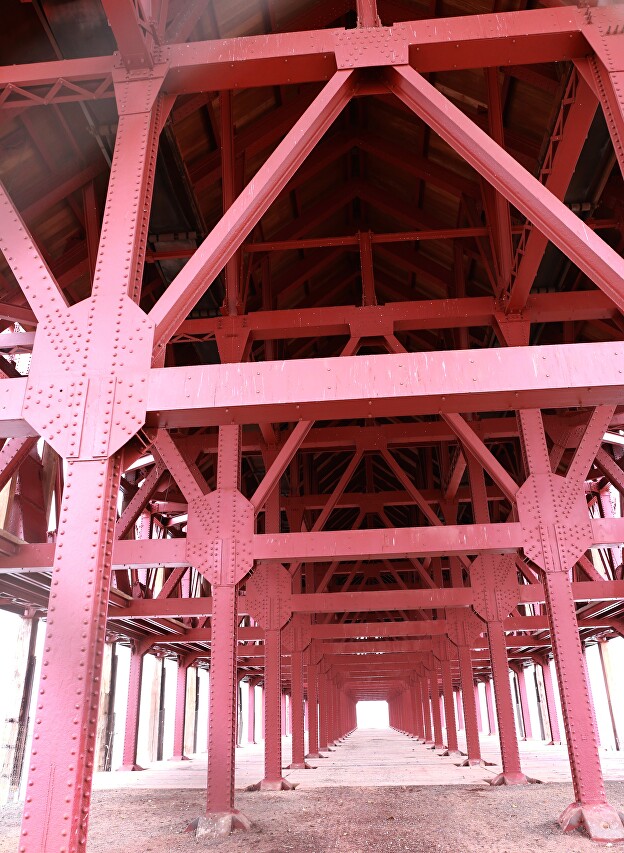Cable Inglés Loading Ramp, Almeria
This grandiose structure in the seaport of Almeria is a monument of technical architecture of the early 20th century and one of the symbols of the city.

In 1899, a railway was opened connecting the mining area of Linares with Almeria to deliver iron ore to the seaport of Almeria. Initially, loading ore on one ship took 8-10 hours, to significantly reduce it, the mining company The Alquife Mines and Railways Company Limited Also asked the authorities for permission to build an overpass from which ore could sleep directly from the wagons into the ship's holds.

I must say that the city community opposed the construction of a monstrous structure in the city center, on the other hand, the overpass reduced the loading time for one vessel to 10 hours, which freed up berths, and the huge bunkers provided by the project for intermediate ore storage on the overpass reduced pollution of port territories. In addition, the overpass promised to increase exports, and, accordingly, tax revenues to the city budget.

Permission was granted in 1902 and construction began immediately. The company was owned by British capital, had its headquarters in the city of Glasgow, so the construction was named Cable Inglés ("English Line") among the residents of the city, although it was officially called "El Alquife Pier" (Muelle El Alquife).

The project was developed by British engineer John Ernst Harrison (John Ernst Harrison), a follower of the Gustave Eiffel school, about four thousand tons of steel were delivered from Scottish factories for construction, 8 thousand cubic meters of wood were used for facing, 1153 cubic meters of concrete were poured, the length of the access railway tracks was just over a kilometer.

After the Civil War, the British property was nationalized, then sold to the Bilbao-based steel company Altos Hornos de Vizcaya. The overpass was in operation until 1973, when the land lease expired in 1980, and the structure was legally subject to demolition. However, in 1984, the Ministry of Culture proposed to preserve the building as a monument of industrial architecture. However, for almost 30 years, no one was working on the overpass and it gradually collapsed from corrosion.

In 1998, Cable Inglés received the status of a cultural monument of Andalusia and was transferred from the ownership of the seaport to the Municipality of Almeria. Restoration work began at the end of 2010, emergency metal structures were replaced, the overpass was painted, and the surrounding area was cleaned. According to the project, there should be an exhibition center, a restaurant and an entertainment complex, but this has not yet been implemented, only a viewing platform is arranged at the top.
